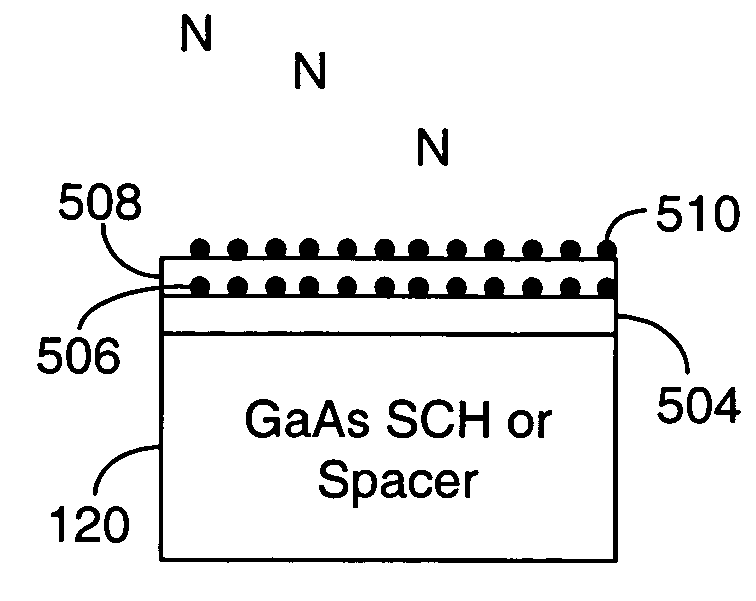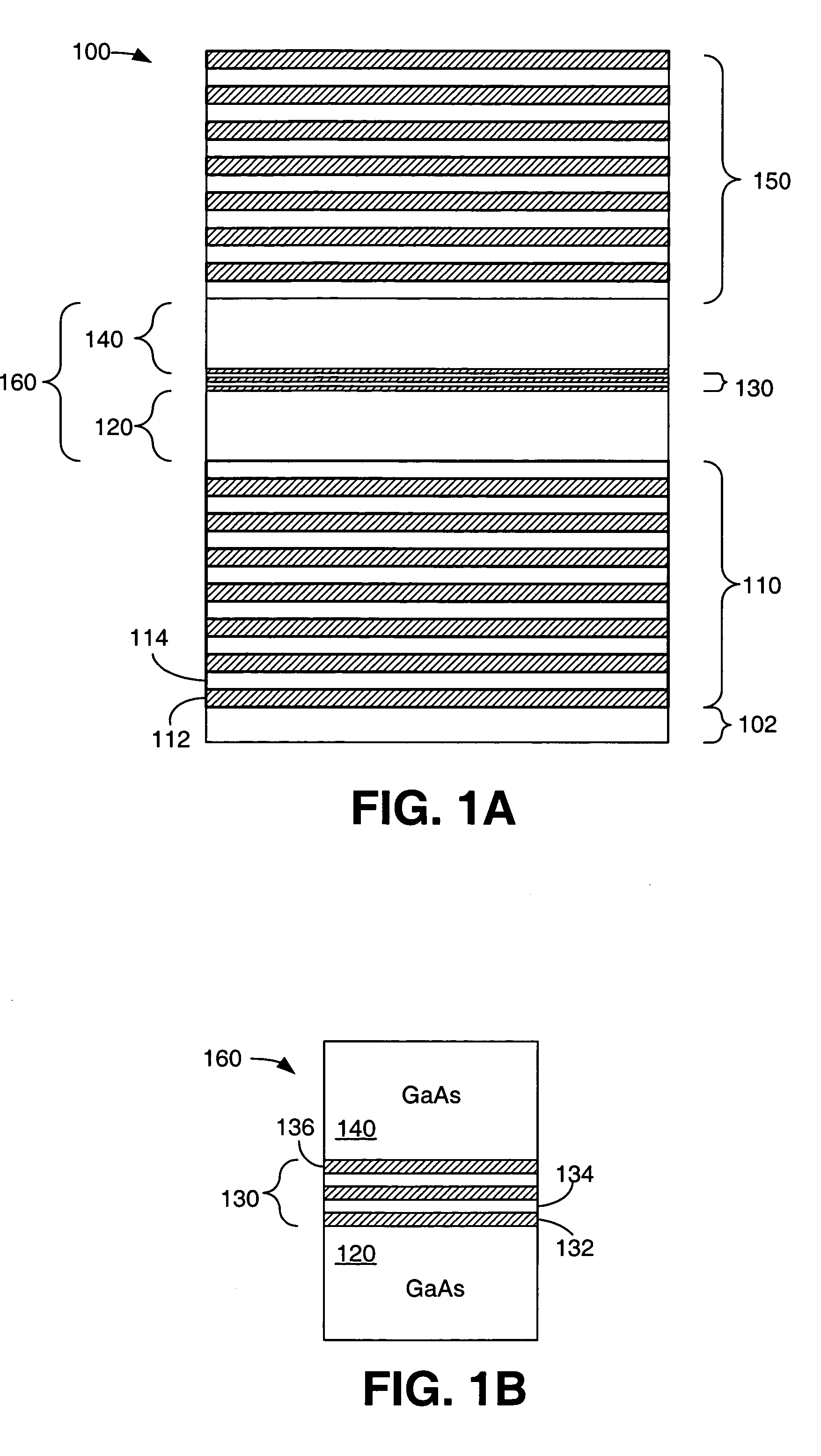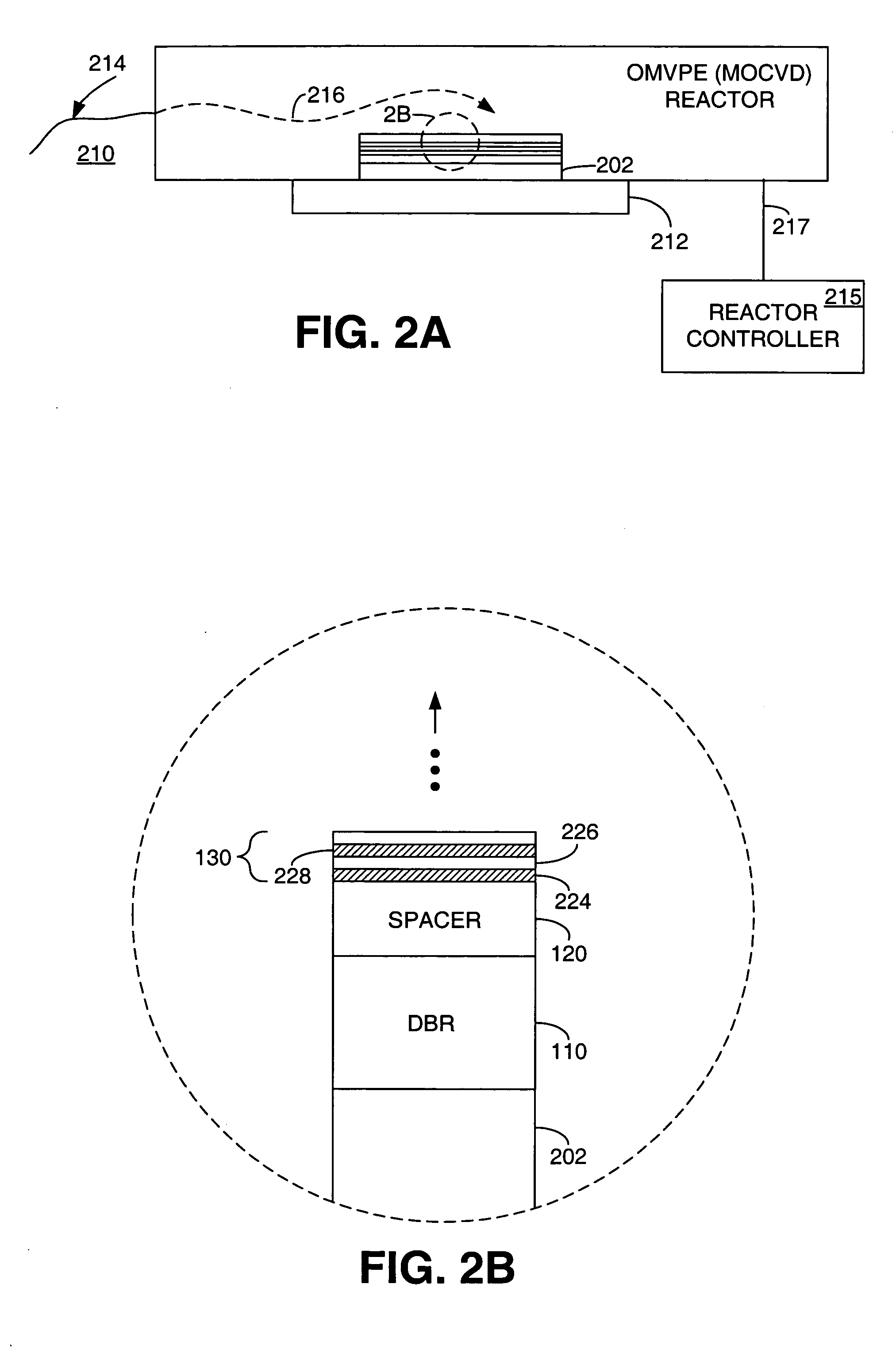Method of making a long wavelength indium gallium arsenide nitride (InGaAsN) active region
a technology of indium gallium arsenide nitride and active region, which is applied in the direction of crystal growth process, polycrystalline material growth, semiconductor lasers, etc., can solve the problems of long growth time, inability to scale well, and inability to produce high-volume light-emitting devices, etc., to maximize the concentration of nitrogen precursors, minimize concentration, excellent electro-optical properties
- Summary
- Abstract
- Description
- Claims
- Application Information
AI Technical Summary
Benefits of technology
Problems solved by technology
Method used
Image
Examples
first embodiment
[0043]FIG. 2B is a detailed view of VCSEL 100 shown in FIG. 2A part-way through the process of growing the layer structure. The epitaxial layers that form DBR 110 and lower cavity spacer layer 120 have been deposited on substrate wafer 202 by OMVPE at a conventional growth pressure, which is less than or equal to 100 mbar. After deposition of these layers, and in accordance with the invention, the growth pressure in OMVPE reactor 210 is increased to a sub-atmospheric elevated growth pressure and active region 130 is then grown on lower cavity spacer layer 120. Increasing the growth pressure in the OMVPE reactor to a sub-atmospheric elevated growth pressure allows the InGaAsN quantum well layers to be grown with good electro-optical properties but with the flow rate of the arsenic precursor reduced relative to that used at a conventional growth pressure. The lower flow rate of the arsenic precursor increases the effective concentration of the nitrogen precursor in the flow of precurs...
second embodiment
[0070]FIGS. 6A through 6F are schematic views illustrating a method in accordance with the invention for epitaxially growing a quantum well layer of InGaAsN having a high nitrogen fraction. The quantum well layer is shown being grown on the surface of lower cavity spacer layer 120. DBR 110 (FIG. 1A) and lower cavity spacer layer 120 are grown on a substrate wafer 202 (FIG. 2A) as described above with reference to FIG. 2A. In FIG. 6A, an indium precursor, a gallium precursor, an arsenic precursor and a carrier gas have been supplied to an OMVPE reactor similar to that shown in FIG. 2A to grow a sublayer 504 on the surface of lower cavity spacer layer 120. The material of the sublayer is InGaAs and the sublayer has a thickness of one or two atoms.
[0071]In FIG. 6B, a growth stop is performed. In the growth stop, the flow of the Group III precursors is discontinued. Additionally, the arsine flow rate is lowered and a high flow rate of a nitrogen precursor supplied to the reactor. This e...
PUM
| Property | Measurement | Unit |
|---|---|---|
| internal quantum efficiency | aaaaa | aaaaa |
| partial pressure | aaaaa | aaaaa |
| pressure | aaaaa | aaaaa |
Abstract
Description
Claims
Application Information
 Login to View More
Login to View More - R&D
- Intellectual Property
- Life Sciences
- Materials
- Tech Scout
- Unparalleled Data Quality
- Higher Quality Content
- 60% Fewer Hallucinations
Browse by: Latest US Patents, China's latest patents, Technical Efficacy Thesaurus, Application Domain, Technology Topic, Popular Technical Reports.
© 2025 PatSnap. All rights reserved.Legal|Privacy policy|Modern Slavery Act Transparency Statement|Sitemap|About US| Contact US: help@patsnap.com



